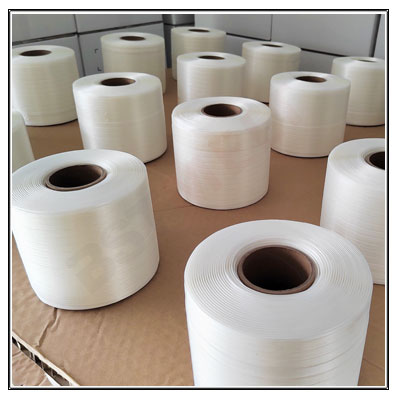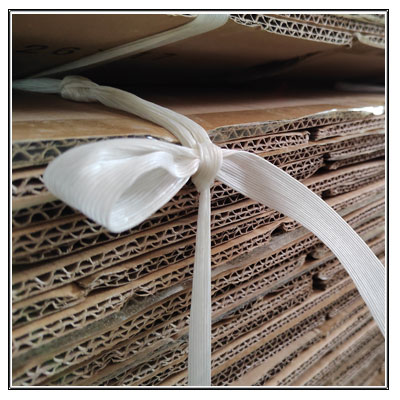- +86 136 65744767
- 09:00 AM - 5:00 PM
In the dynamic realm of agriculture, the efficient packaging and storage of crops play a critical role in ensuring their quality and marketability. Among the array of techniques and technologies employed by farmers, baling strapping stands out as a fundamental tool for securing bales of hay, straw, and other agricultural products. Its role in maintaining the integrity of packaged goods during handling, transportation, and storage cannot be overstated. Let's delve into the intricacies of baling strapping and its indispensable role in modern farming practices.


Baling strapping serves as the linchpin in the packaging process, providing a reliable means of bundling and securing agricultural products into compact, manageable units. Whether it's hay bales destined for livestock feed or straw bales used for bedding and mulching, the proper application of strapping ensures that these products reach their intended destination intact and undamaged.
The versatility of baling strapping lies in its ability to accommodate a wide range of materials and bale sizes, catering to the diverse needs of farmers and agricultural operations. From traditional twine and wire to modern alternatives such as plastic, polyester, and steel, the choice of strapping material depends on factors such as product type, handling requirements, and environmental considerations.
Plastic strapping, for instance, offers affordability and ease of use, making it a popular choice among farmers for a variety of applications. Its flexibility and strength make it well-suited for securing lightweight bales of hay or straw, while its resistance to moisture and UV radiation ensures durability in outdoor storage environments.
On the other hand, polyester and steel strapping provide superior strength and durability, making them ideal for heavier bales and demanding applications. Polyester strapping, in particular, offers the added benefit of recyclability, aligning with sustainability goals and environmental stewardship initiatives within the agricultural sector.
Regardless of the chosen material, the proper application of baling strapping requires precision and attention to detail. From selecting the appropriate strapping width and thickness to ensuring proper tensioning and sealing, every step in the strapping process contributes to the integrity and stability of the packaged goods.
Moreover, baling strapping plays a crucial role in optimizing storage space and efficiency on the farm. By securely bundling bales into compact units, farmers can maximize the use of available storage facilities, minimizing waste and reducing operational costs. Additionally, the uniformity and consistency achieved through proper strapping facilitate easier handling and transportation, streamlining logistics and improving overall farm productivity.
Beyond its immediate benefits for farmers, baling strapping also holds implications for broader industry trends and market dynamics. As consumer preferences evolve towards sustainability and quality assurance, the reliability and integrity of packaged goods become increasingly important factors in purchasing decisions. Baling strapping, by ensuring the safe and secure transportation of agricultural products from farm to market, contributes to the overall perception of quality and freshness among consumers.
Furthermore, advancements in baling strapping technology have opened up new opportunities for innovation and efficiency within the agricultural sector. Automated strapping equipment, for example, allows for faster and more precise application of strapping, reducing labor costs and increasing throughput in packaging operations. Similarly, developments in strapping materials and techniques continue to improve the performance and sustainability of baling strapping, paving the way for enhanced productivity and competitiveness in agriculture.
However, challenges remain in optimizing the efficiency and sustainability of baling strapping practices. Issues such as waste generation, material recyclability, and environmental impact necessitate ongoing efforts to improve and innovate within the field of agricultural packaging.
In response to these challenges, industry stakeholders are exploring alternative materials and technologies to enhance the sustainability of baling strapping. Biodegradable and compostable strapping materials offer promising solutions for reducing environmental impact and promoting circularity within the agricultural supply chain. Likewise, initiatives aimed at improving recycling infrastructure and promoting closed-loop systems for strapping materials can help minimize waste and maximize resource efficiency.
Looking ahead, the future of baling strapping lies in its continued evolution as a vital component of modern farming practices. By embracing innovation and sustainability, farmers can optimize the efficiency and effectiveness of baling strapping, ensuring the safe and secure packaging and storage of agricultural products for generations to come. Through collaboration, education, and investment in research and development, the agricultural industry can unlock the full potential of baling strapping as a cornerstone of efficient and sustainable farming operations.

BSTSTRAP
No.30 building, Wuxing High-tech Venture Park
Huzhou City, Zhejiang Province,China
Whatsapp:+86 136 6574 4776
Monday to Saturday 9 am to 5 pm
hailey@bststrap.com
Send us your enquiry anytime!